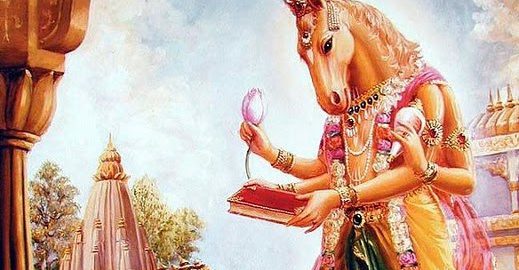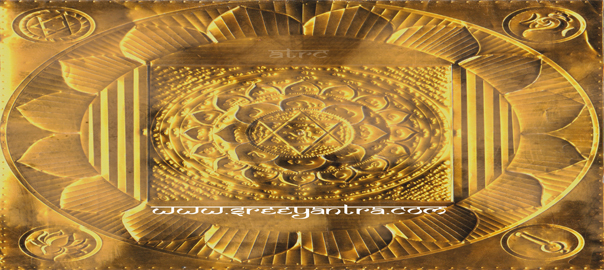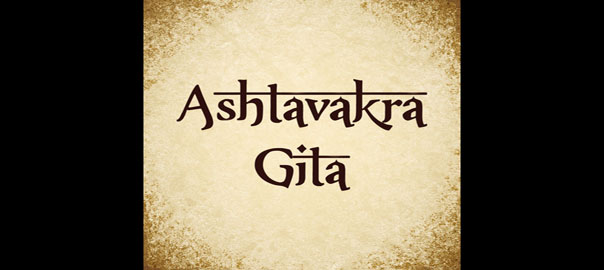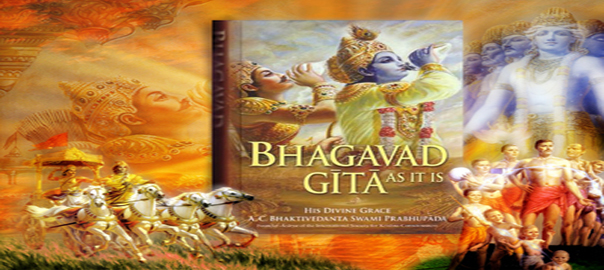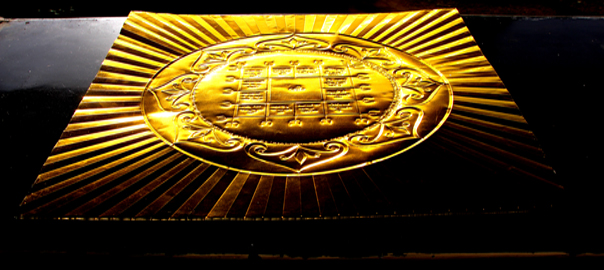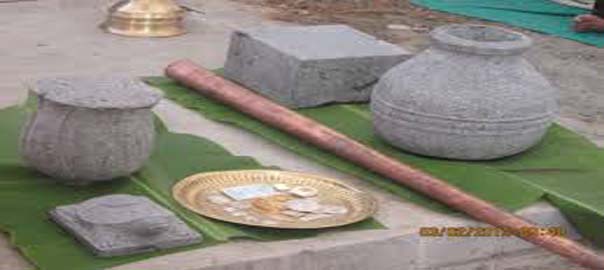Abstract
One of the greatest contributions of India to the world is the Holy Gita which is considered to be one of the first revelations from God. The management lessons in this holy book were brought in to light of the world by divine
Maharshi Mahesh Yogi , Sri Sri Ravi Shankar and Swami Bodhanandji, and the spiritual philosophy by the great Adi Sankaracharya the greatest philosopher of India and proud son of Kerala, and Sri. Srila Prabhupada Swami and humanism by Mata Amritanandamayi Devi and Satya Sai Baba.Maharishi calls the Bhagavad-Gita the essence of Vedic Literature and a complete guide to practical life. It provides “all that is needed to raise the consciousness
of man to the highest possible level.” Maharishi reveals the deep, universal truths of life that speak to the needs and aspirations of everyone. Swami Chinmayanandaji preached and educated the people and Swami Sandeep
Chaitanyaji continuing the mission by keeping this lantern burning always knowing the wishes of the modern generations. Arjuna got mentally depressed when he saw his relatives with whom he has to fight.( Mental health has
become a major international public health concern now). To motivate him the Bhagavad Gita is preached in the battle field Kurukshetra by Lord Krishna to Arjuna as a counseling to do his duty while multitudes of men stood by waiting. It has got all the management tactics to achieve the mental equilibrium and to overcome any crisis situation. The Bhagavad Gita can be experienced as a powerful catalyst for transformation. Bhagavad Gita
means song of the Spirit, song of the Lord. The Holy Gita has become a secret driving force behind the unfoldment of one’s life. In the days of doubt this divine book will support all spiritual searches. This divine book will contribute to self reflection, finer feeling and deepen one’s inner process.
Then life in the world can become a real education dynamic, full and joyful no matter what the circumstance. May the wisdom of loving consciousness ever guide us on our journey? What makes the Holy Gita a practical psychology of transformation is that it offers us the tools to connect with our deepest intangible essence and we must learn to participate in the battle of life with right knowledge?. It shows us the path to handle the situation with an equipoised mind irrespective of what comes our way and reminds us time and again, that what the right action is.
The Holy Gita is the essence of the Vedas, Upanishads. It is a universal scripture applicable to people of all temperaments and for all times. It is a book with sublime thoughts and practical instructions on Yoga, Devotion,
Vedanta and Action. It is profound in thought and sublime in heights of vision. It brings peace and solace to souls that are afflicted by the three fires of mortal existence, namely, afflictions caused by one’s own body
(disease etc), those caused by beings around one (e.g. wild animals, snakes etc.), and those caused by the gods (natural disasters, earth-quakes, floods etc).Mind can be one’s friend or enemy. Mind is the cause for both bondage and liberation. The word mind is derived from man to think and the word man derived from Manu (sanskrit word for man).
“The Supreme Lord is situated in everyone’s heart, O Arjuna, and is directing the wanderings of all living entities, who are seated as on a machine, made of the material energy.” There is no theory to be internalized and applied in this psychology.Ancient practices spontaneously induce what each person needs as the individual and the universal coincide. The work proceeds through intellectual knowledge of the playing field (jnana yoga), emotional devotion to the ideal (bhakti yoga) and right action that includes both feeling and knowledge(karma yoga). With ongoing purification we approach wisdom. The Bhagavad Gita is a message addressed to each and every human individual to help him or her to solve the vexing problem of overcoming the present and progressing towards a bright future. Within its eighteen chapters is revealed a human drama. This is the experience of everyone in this world, the drama of the ascent of man from a state of utter dejection, sorrow and total breakdown and hopelessness to a state of perfect understanding, clarity, renewed strength and triumph. “Freed from attachment, fear and anger, absorbed in Me, and taking refuge in Me, purified by the penance of knowledge, many have attained union with My
Being.” (Gita 4:10)
Mind is very restless, forceful and strong, O Krishna, it is more difficult to control the mind than to control the wind ~ Arjuna to Sri Krishna
Introduction
In this modern world the art of Management has become a part and parcel of everyday life, be it at home, in the office or factory and in Government. In all organizations, where a group of human beings assemble for a common
purpose irrespective of caste, creed, and religion, management principles come into play through the management of resources, finance and planning, priorities, policies and practice. Management is a systematic way of
carrying out activities in any field of human effort. Management need to focus more on leadership skills, e.g., establishing vision and goals, communicating the vision and goals, and guiding others to accomplish them.
It also assert that leadership must be more facilitative, participative and empowering in how visions and goals are established and carried out. Some people assert that this really isn’t a change in the management functions,
rather it’s re-emphasizing certain aspects of management. Its task is to make people capable of joint performance, to make their weaknesses irrelevant, says the Management Guru Peter Drucker. It creates harmony in working together – equilibrium in thoughts and actions, goals and achievements, plans and performance, products and markets. It resolves situations of scarcity, be they in the physical, technical or human fields, through maximum utilization with the minimum available processes to achieve the goal.
Lack of management causes disorder, confusion, wastage, delay, destruction and even depression. Managing men, money and materials in the best possible way, according to circumstances and environment, is the most
important and essential factor for a successful management.Management guidelines from the Bhagavad Gita
There is an important distinction between effectiveness and efficiency in managing.
Effectiveness is doing the right things.Efficiency is doing things right. The general principles of effective management can be applied in every field, the differences being more in application than in principle. The
Manager’s functions can be summed up as:
Forming a vision
Planning the strategy to realize the vision.
Cultivating the art of leadership.
Establishing institutional excellence.
Building an innovative organization.
Developing human resources.
Building teams and teamwork.
Delegation, motivation, and communication.
Reviewing performance and taking corrective steps when called for.
Thus, management is a process of aligning people and getting them committed to work for a common goal to the maximum social benefit – in search of excellence. Major functions of a manager are planning, organizing, leading
and coordinating activities — they put different emphasis and suggest different natures of activities in the following four major functions..The critical question in all managers’ minds is how to be effective in their
job. The answer to this fundamental question is found in the Bhagavad Gita, which repeatedly proclaims that “you must try to manage yourself.” The reason is that unless a manager reaches a level of excellence and effectiveness, he or she will be merely a face in the crowd.
Old truths in a new context:
The Bhagavad Gita, written thousands of years ago, enlightens us on all managerial techniques leading us towards a harmonious and blissful state of affairs in place of the conflict, tensions, poor productivity, absence of
motivation and so on, common in most of Indian enterprises today – and probably in enterprises in many other countries.The modern (Western) management concepts of vision, leadership, motivation, excellence in work, achieving goals, giving work meaning, decision making and planning, are all discussed in the Bhagavad Gita. There is one major difference. While Western management thought too often deals with problems at material, external and peripheral levels, the Bhagavad Gita tackles the issues from the grass roots level of human thinking. Once the basic thinking of man is improved, it will automatically enhance the quality of his actions and their results.
The management philosophy emanating from the West is based on the lure of materialism and on a perennial thirst for profit, irrespective of the quality of the means adopted to achieve that goal. This phenomenon has its
source in the abundant wealth of the West and so ‘management by materialism’ has caught the fancy of all the countries the world over, India being no exception to this trend.
My country, India, has been in the forefront in importing these ideas mainly because of its centuries old indoctrination by colonial rulers, which has inculcated in us a feeling that anything Western is good and anything Indian, is inferior. Gita does not prohibit seeking money, power, comforts, health. It advocates active pursuit of one’s goals without getting attached to the process and the results.
The result is that, while huge funds have been invested in building temples of modem management education, no perceptible changes are visible in the improvement of the general quality of life – although the standards of
living of a few has gone up. The same old struggles in almost all sectors of the economy, criminalization of institutions, social violence, exploitation and other vices are seen deep in the body politic.
The source of the problem:
The reasons for this sorry state of affairs are not far to seek. The Western idea of management centers on making the worker (and the manager) more efficient and more productive. Companies offer workers more to work more,
produce more, sell more and to stick to the organization without looking for alternatives. The sole aim of extracting better and more work from the worker is to improve the bottom-line of the enterprise. The worker has
become a hirable commodity, which can be used, replaced and discarded at will. Thus, workers have been reduced to the state of a mercantile product. In such a state, it should come as no surprise to us that workers start using
strikes (gheraos) sit-ins, (dharnas) go-slows, work-to-rule etc. to get maximum benefit for themselves from the organisations. Society-at-large is damaged. Thus we reach a situation in which management and workers become
separate and contradictory entities with conflicting interests. There is no common goal or understanding. This, predictably, leads to suspicion,friction, disillusion and mistrust, with managers and workers at cross
purposes. The absence of human values and erosion of human touch in the organizational structure has resulted in a crisis of confidence.Western management philosophy may have created prosperity – for some
people some of the time at least – but it has failed in the aim of ensuring betterment of individual life and social welfare. It has remained by and large a soulless edifice and an oasis of plenty for a few in the midst of
poor quality of life for many. Hence, there is an urgent need to re-examine prevailing management disciplines – their objectives, scope and content. Management should be redefined to underline the development of the worker as a person, as a human being, and not as a mere wage-earner. With this changed perspective, management can become an instrument in the process of social, and indeed national, development.
Now let us re-examine some of the modern management concepts in the light of the Bhagavad Gita which is a primer of management-by-values.
Utilization of available resources The first lesson of management science is to choose wisely and utilize
scarce resources optimally. During the curtain raiser before the Mahabharata War, Duryodhana chose Sri Krishna’s large army for his help while Arjuna selected Sri Krishna’s wisdom for his support. This episode gives us a clue
as to the nature of the effective manager – the former chose numbers, the latter, wisdom.
Work commitment
A popular verse of the Gita advises “detachment” from the fruits or results of actions performed in the course of one’s duty. Being dedicated work has to mean “working for the sake of work, generating excellence for its own
sake.” If we are always calculating the date of promotion or the rate of commission before putting in our efforts, then such work is not detached. It is not “generating excellence for its own sake” but working only for the
extrinsic reward that may (or may not) result. Working only with an eye to the anticipated benefits, means that the quality of performance of the current job or duty suffers – through mental agitation of anxiety for the future. In fact, the way the world works means that events do not always respond positively to our calculations and hence
expected fruits may not always be forthcoming. So, the Gita tells us not to mortgage present commitment to an uncertain future.Some people might argue that not seeking the business result of work and actions, makes one unaccountable. In fact, the Bhagavad Gita is full of advice on the theory of cause and effect, making the doer responsible for the consequences of his deeds. While advising detachment from the avarice of selfish gains in discharging one’s accepted duty, the Gita does not absolve anybody of the consequences arising from discharge of his or her responsibilities.
Attachment to perishable gives birth to fear, anger, greed, desire, feeling of “mine” and many other negative qualities. Renounce attachment by regarding objects for others and for serving others. Depend only on God (not body, nor intellect), and the dependency on the world will end. Renouncing attachment is the penance of knowledge, which leads to His Being – Truth, Consciousness and Bliss. (Heaved Gita-4.10)
Thus the best means of effective performance management is the work itself. Attaining this state of mind (called “nishkama karma”) is the right attitude to work because it prevents the ego, the mind, from dissipation of attention through speculation on future gains or losses. Motivation self and self-transcendence:
It has been presumed for many years that satisfying lower order needs of workers – adequate food, clothing and shelter, etc. are key factors in motivation. However, it is a common experience that the dissatisfaction of
the clerk and of the Director is identical – only their scales and composition vary.
It should be true that once the lower-order needs are more than satisfied, the Director should have little problem in optimizing his contribution to the organization and society. But more often than not, it does not happen like that. (“The eagle soars high but keeps its eyes firmly fixed on the dead animal below.”) On the contrary, a lowly paid schoolteacher, or a self-employed artisan, may well demonstrate higher levels of self-actualization despite poorer satisfaction of their lower-order needs.
This situation is explained by the theory of self-transcendence propounded in the Gita. Self-transcendence involves renouncing egoism, putting others before oneself, emphasizing team work, dignity, co-operation, harmony and
trust, indeed potentially sacrificing lower needs for higher goals, the opposite of Maslow.”Work must be done with detachment.” It is the ego that spoils work and the ego is the centerpiece of most theories of motivation. We need not merely a theory of motivation but a theory of inspiration.
The Great Indian poet, Rabindranath Tagore (1861-1941, known as “Gurudev”) says working for love is freedom in action. A concept which is described as “disinterested work” in the Gita where Sri Krishna says,
“He who shares the wealth generated only after serving the people, through work done as a sacrifice for them, is freed from all sins. On the contrary those who earn wealth only for themselves, eat sins that lead to frustration
and failure.”
Disinterested work finds expression in devotion, surrender and equipoise. The former two are psychological while the third is determination to keep the mind free of the dualistic (usually taken to mean “materialistic”) pulls
of daily experiences. Detached involvement in work is the key to mental equanimity or the state of “nirdwanda.” This attitude leads to a stage where the worker begins to feel the presence of the Supreme Intelligence guiding
the embodied individual intelligence. Such de-personified intelligence is best suited for those who sincerely believe in the supremacy of organizational goals as compared to narrow personal success and achievement.
Work culture An effective work culture is about vigorous and arduous efforts in pursuit
of given or chosen tasks. Sri Krishna elaborates on two types of work culture “daivi sampat” or divine work culture and “asuri sampat” or demonic work culture. Daivi work culture – involves fearlessness, purity, self-control, sacrifice, straightforwardness, self-denial, calmness, absence of fault-finding, absence of greed, gentleness, modesty, absence of envy and pride. Asuri work culture – involves egoism, delusion, personal desires, improper
performance, work not oriented towards service. Mere work ethic is not enough. The hardened criminal exhibits an excellent work ethic. What is needed is a work ethic conditioned by ethics in work.
It is in this light that the counsel, “yogah karmasu kausalam” should be understood. “Kausalam” means skill or technique of work which is an
indispensable component of a work ethic. ” Yogah” is defined in the Gita itself as “samatvam yogah uchyate” meaning an unchanging equipoise of mind
(detachment.) Tilak tells us that acting with an equable mind is Yoga.(Bal Gangadhar Tilak, 1856-1920, the precursor of Gandhiji, hailed by the
people of India as “Lokmanya,” probably the most learned among the country’s political leaders. For a description of the meanings of the word “Yoga”, see
foot of this page.)
By making the equable mind the bed-rock of all actions, the Gita evolved the goal of unification of work ethic with ethics in work, for without ethical
process no mind can attain an equipoise. The guru, Adi Sankara (born circa 800 AD), says that the skill necessary in the performance of one’s duty is
that of maintaining an evenness of mind in face of success and failure.The calm mind in the face of failure will lead to deeper introspection and see
clearly where the process went wrong so that corrective steps could be taken to avoid shortcomings in future.
The principle of reducing our attachment to personal gains from the work done is the Gita’s prescription for attaining equanimity. It has been held
that this principle leads to lack of incentive for effort, striking at the very root of work ethic. To the contrary, concentration on the task for its
own sake leads to the achievement of excellence – and indeed to the true mental happiness of the worker.
Thus, while commonplace theories of motivation may be said to lead us to the bondage or extrinsic rewards, the Gita’s principle leads us to the intrinsic rewards of mental, and indeed
moral, satisfaction.
Work results
The Gita further explains the theory of “detachment” from the extrinsic rewards of work in saying:
If the result of sincere effort is a success, the entire credit should not be appropriated by the worker alone. If the result of sincere effort is a failure, then too the entire
blame does not accrue to the worker. The former attitude mollifies arrogance and conceit while the latter
prevents excessive despondency, de-motivation and self-pity. Thus both these dispositions safeguard the doer against psychological vulnerability, the
cause of the modem managers’ companions of diabetes, high blood pressure and ulcers.
Assimilation of the ideas of the Gita leads us to the wider spectrum of “lokasamgraha” (general welfare) but there is also another dimension to the
work ethic – if the “karmayoga” (service) is blended with “bhaktiyoga” (devotion), then the work itself becomes worship, a “sevayoga” (service for
its own sake.)
Along with bhakti yoga as a means of liberation, the Gita espouses the doctrine of nishkamya karma or pure action untainted by hankering after the
fruits resulting from that action. Modern scientists have now understood the intuitive wisdom of that action in a new light.
Scientists at the US National Institute of Mental Health in Bethesda, found that laboratory monkeys that started out as procrastinators, became
efficient workers after they received brain injections that suppressed a gene linked to their ability to anticipate a reward. The scientists reported
that the work ethic of rhesus macaques wasn’t all that different from that of many people: “If the reward is not immediate, you procrastinate”, Dr
Richmond told LA Times. (This may sound a peculiarly religious idea but it has a wider application.
It could be taken to mean doing something because it is worthwhile, to serve others, to make the world a better place.)
Manager’s mental health Sound mental health is the very goal of any human activity – more so
management. Sound mental health is that state of mind which can maintain a
calm, positive poise, or regain it when unsettled, in the midst of all the
external vagaries of work life and social existence. Internal constancy and
peace are the pre-requisites for a healthy stress-free mind. At the initial
stages when engaging in a relationship, the mind may wander and go to
different places. But we must have a clear aim, a clear focus, a single
pointed direction. Thereafter the mind will not wander in different places.
The mind will remain on only one.
..
Some of the impediments to sound mental health are:
Greed – for power, position, prestige and money.
Envy – regarding others’ achievements, success, rewards.
Egotism – about one’s own accomplishments.
Suspicion, anger and frustration.
Anguish through comparisons.
The driving forces in today’s businesses are speed and competition. There is
a distinct danger that these forces cause erosion of the moral fiber, that
in seeking the end, one permits oneself immoral means – tax evasion,
illegitimate financial holdings, being “economical with the truth”,
deliberate oversight in the audit, too-clever financial reporting and so on.
This phenomenon may be called as “yayati syndrome”.
In the book, the Mahabharata, we come across a king by the name of Yayati
who, in order to revel in the endless enjoyment of flesh exchanged his old
age with the youth of his obliging youngest son for a thousand years.
However, he found the pursuit of sensual enjoyments ultimately unsatisfying
and came back to his son pleading him to take back his youth. This “yayati
syndrome” shows the conflict between externally directed acquisitions
(extrinsic motivation) and inner value and conscience (intrinsic
motivation.)
Our mind is like a computer, continuously programmed since our childhood
along with some vasanas from our previous birth. This programming is both
good and bad for ourselves, a healthier programming makes us a productive
and happy individual, while a bad program may turn us into a unproductive.
If we choose to surrender our Mind, Ego and operate from that realm, it is
like asking a person to live with his brain defunct!! It will be a futile
exercise.
Mental peace can be achieved by effective delegation. Delegation
is when supervisors give responsibility and authority to subordinates to
complete a task, and let the subordinates figure out how the task can be
accomplished. Effective delegation develops people who are ultimately more
fulfilled and productive. Managers become more fulfilled and productive
themselves as they learn to count on their staffs and are freed up to attend
to more strategic issues.
Delegation is often very difficult for new supervisors, particularly if they
have had to scramble to start the organization or start a major new product
or service themselves. Many managers want to remain comfortable, making the
same decisions they have always made. They believe they can do a better job
themselves. They don’t want to risk losing any of their power and stature
(ironically, they do lose these if they don’t learn to delegate
effectively). Often, they don’t want to risk giving authority to
subordinates in case they fail and impair the organization.
This is one reason why such an exercise of surrendering mind, ego etc fails
in the real world. Man is a biological machine, and he cannot operate
without those necessary components of his software.
Management needs those who practice what they preach
“Whatever the excellent and best ones do, the commoners follow,” says Sri
Krishna in the Gita. The visionary leader must be a missionary, extremely
practical, intensively dynamic and capable of translating dreams into
reality. This dynamism and strength of a true leader flows from an inspired
and spontaneous motivation to help others. “I am the strength of those who
are devoid of personal desire and attachment. O Arjuna, I am the legitimate
desire in those, who are not opposed to righteousness,” says Sri Krishna in
the 10th Chapter of the Gita.
Conclusion
The despondency of Arjuna in the first chapter of the Gita is typically
human. Sri Krishna, by sheer power of his inspiring words, changes Arjuna’s
mind from a state of inertia to one of righteous action, from the state of
what the French philosophers call “anomie” or even alienation, to a state of
self-confidence in the ultimate victory of “dharma” (ethical action.)
When Arjuna got over his despondency and stood ready to fight, Sri Krishna
reminded him of the purpose of his new-found spirit of intense action – not
for his own benefit, not for satisfying his own greed and desire, but for
the good of many, with faith in the ultimate victory of ethics over
unethical actions and of truth over untruth.
Sri Krishna’s advice with regard to temporary failures is, “No doer of good
ever ends in misery.” Every action should produce results. Good action
produces good results and evil begets nothing but evil. Therefore, always
act well and be rewarded.
My purport is not to suggest discarding of the Western model of efficiency,
dynamism and striving for excellence but to tune these ideals to India’s
holistic attitude of ” lokasangraha” – for the welfare of many, for the good
of many. There is indeed a moral dimension to business life. What we do in
business is no different, in this regard, to what we do in our personal
lives. The means do not justify the ends. Pursuit of results for their own
sake, is ultimately self-defeating. (“Profit,” said Matsushita-san in
another tradition, “is the reward of correct behavior.” – ed.)
A note on the word “yoga”.
Yoga has two different meanings – a general meaning and a technical meaning.
The general meaning is the joining together or union of any two or more
things. The technical meaning is “a state of stability and peace and the
means or practices which lead to that state.” The Bhagavad Gita uses the
word with both meanings.
M.P.Bhattathiri.
Let us go through what scholars say about the Holy Bhagavad Gita.
“No work in all Indian literature is more quoted, because none is better
loved, in the West, than the Bhagavad-gita. Translation of such a work
demands not only knowledge of Sanskrit, but an inward sympathy with the
theme and a verbal artistry. For the poem is a symphony in which God is seen
in all things. The Swami does a real service for students by investing
the beloved Indian epic with fresh meaning. Whatever our outlook may be, we
should all be grateful for the labor that has lead to this illuminating
work.”
Dr. Geddes MacGregor, Emeritus Distinguished Professor of Philosophy
University of Southern California
“The Gita can be seen as the main literary support for the great religious
civilization of India, the oldest surviving culture in the world. The
present translation and commentary is another manifestation of the permanent
living importance of the Gita.”
Thomas Merton, Theologian
“I am most impressed with A.C. Bhaktivedanta Swami Prabhupada’s scholarly
and authoritative edition of Bhagavad-gita. It is a most valuable work for
the scholar as well as the layman and is of great utility as a reference
book as well as a textbook. I promptly recommend this edition to my
students. It is a beautifully done book.”
Dr. Samuel D. Atkins Professor of Sanskrit, Princeton University
“As a successor in direct line from Caitanya, the author of Bhagavad-gita As
It is entitled, according to Indian custom, to the majestic title of His
Divine Grace A.C. Bhaktivedanta Swami Prabhupada. The great interest that
his reading of the Bhagavad-gita holds for us is that it offers us an
authorized interpretation according to the principles of the Caitanya
tradition.”
Olivier Lacombe Professor of Sanskrit and Indology, Sorbonne University,
Paris
“I have had the opportunity of examining several volumes published by the
Bhaktivedanta Book Trust and have found them to be of excellent quality and
of great value for use in college classes on Indian religions. This is
particularly true of the BBT edition and translation of the Bhagavad-gita.”
Dr. Frederick B. Underwood Professor of Religion, Columbia University
“If truth is what works, as Pierce and the pragmatists insist, there must be
a kind of truth in the Bhagavad-Gita As It Is, since those who follow its
teachings display a joyous serenity usually missing in the bleak and
strident lives of contemporary people.”
Dr. Elwin H. Powell Professor of Sociology State University of New York,
Buffalo
“There is little question that this edition is one of the best books
available on the Gita and devotion. Prabhupada’s translation is an ideal
blend of literal accuracy and religious insight.”
Dr. Thomas J. Hopkins Professor of Religion, Franklin and Marshall College
“The Bhagavad-gita, one of the great spiritual texts, is not as yet a common
part of our cultural milieu. This is probably less because it is alien per
se than because we have lacked just the kind of close interpretative
commentary upon it that Swami Bhaktivedanta has here provided, a commentary
written from not only a scholar’s but a practitioner’s, a dedicated lifelong
devotee’s point of view.”
Denise Levertov, Poet
“The increasing numbers of Western readers interested in classical Vedic
thought have been done a service by Swami Bhaktivedanta. By bringing us a
new and living interpretation of a text already known to many, he has
increased our understanding manyfold.”
Dr. Edward C Dimock, Jr. Department of South Asian Languages and
Civilization University of Chicago
“The scholarly world is again indebted to A. C. Bhaktivedanta Swami
Prabhupada. Although Bhagavad-gita has been translated many times,
Prabhupada adds a translation of singular importance with his commentary.”
Dr. J. Stillson Judah, Professor of the History of Religions and Director of
Libraries Graduate Theological Union, Berkeley, California
“Srila Prabhupada’s edition thus fills a sensitive gap in France, where many
hope to become familiar with traditional Indian thought, beyond the
commercial East-West hodgepodge that has arisen since the time Europeans
first penetrated India. “Whether the reader be an adept of Indian
spiritualism or not, a reading of the Bhagavad-gita As It Is will be
extremely profitable. For many this will be the first contact with the true
India, the ancient India, the eternal India.”
Francois Chenique, Professor of Religious Sciences Institute of Political
Studies, Paris, France
“It was as if an empire spoke to us, nothing small or unworthy, but large,
serene, consistent, the voice of an old intelligence which in another age
and climate had pondered and thus disposed of the same questions which
exercise us”
Emerson’s reaction to the Gita
“As a native of India now living in the West, it has given me much grief to
see so many of my fellow countrymen coming to the West in the role of gurus
and spiritual leaders. For this reason, I am very excited to see the
publication of Bhagavad-gita As It Is by Sri A.C. Bhaktivedanta Swami
Prabhupada. It will help to stop the terrible cheating of false and
unauthorized ‘gurus’ and ‘yogis’ and will give an opportunity to all people
to understand the actual meaning of Oriental culture.”
Dr. Kailash Vajpeye, Director of Indian Studies Center for Oriental Studies,
The University of Mexico
“The Gita is one of the clearest and most comprehensive one, of the
summaries and systematic spiritual statements of the perennial philosophy
ever to have been done”
__________________________________________Aldous Huxley
“It is a deeply felt, powerfully conceived and beautifully explained work. I
don’t know whether to praise more this translation of the Bhagavad-gita, its
daring method of explanation, or the endless fertility of its ideas. I have
never seen any other work on the Gita with such an important voice and
style. . . . It will occupy a significant place in the intellectual and
ethical life of modern man for a long time to come.”
Dr. Shaligram Shukla Professor of Linguistics, Georgetown University
“I can say that in the Bhagavad-gita As It Is I have found explanations and
answers to questions I had always posed regarding the interpretations of
this sacred work, whose spiritual discipline I greatly admire. If the
asceticism and ideal of the apostles which form the message of the
Bhagavad-Gita As It Is were more widespread and more respected, the world in
which we live would be transformed into a better, more fraternal place.”
Dr. Paul Lesourd, Author Professeur Honoraire, Catholic University of Paris
“When I read the Bhagavad-Gita and reflect about how God created this
universe everything else seems so superfluous.”
Albert Einstein
“When doubts haunt me, when disappointments stare me in the face, and I see
not one ray of hope on the horizon, I turn to Bhagavad-Gita and find a verse
to comfort me; and I immediately begin to smile in the midst of overwhelming
sorrow. Those who meditate on the Gita will derive fresh joy and new
meanings from it every day.”
Mahatma Gandhi
“In the morning I bathe my intellect in the stupendous and cosmoganal
philosophy of the Bhagavad-Gita, in comparison with which our modern world
and its literature seem puny and trivial.”
Henry David Thoreau
“The Bhagavad-Gita has a profound influence on the spirit of mankind by its
devotion to God which is manifested by actions.”
Dr. Albert Schweitzer
“The Bhagavad-Gita is a true scripture of the human race a living creation
rather than a book, with a new message for every age and a new meaning for
every civilization.”
Sri Aurobindo
“The idea that man is like unto an inverted tree seems to have been current
in by gone ages. The link with Vedic conceptions is provided by Plato in his
Timaeus in which it states ‘behold we are not an earthly but a heavenly
plant.’ This correlation can be discerned by what Krishna expresses in
chapter 15 of Bhagavad-Gita.”
Carl Jung
“The Bhagavad-Gita deals essentially with the spiritual foundation of human
existence. It is a call of action to meet the obligations and duties of
life; yet keeping in view the spiritual nature and grander purpose of the
universe.”
Prime Minister Nehru
“The marvel of the Bhagavad-Gita is its truly beautiful revelation of life’s
wisdom which enables philosophy to blossom into religion.”
Herman Hesse
“I owed a magnificent day to the Bhagavad-gita. It was the first of books;
it was as if an empire spoke to us, nothing small or unworthy, but large,
serene, consistent, the voice of an old intelligence which in another age
and climate had pondered and thus disposed of the same questions which
exercise us.”
Ralph Waldo Emerson
“In order to approach a creation as sublime as the Bhagavad-Gita with full
understanding it is necessary to attune our soul to it.”
Rudolph Steiner
“From a clear knowledge of the Bhagavad-Gita all the goals of human
existence become fulfilled. Bhagavad-Gita is the manifest quintessence of
all the teachings of the Vedic scriptures.”
Adi Shankara
“The Bhagavad-Gita is the most systematic statement of spiritual evolution
of endowing value to mankind. It is one of the most clear and comprehensive
summaries of perennial philosophy ever revealed; hence its enduring value is
subject not only to India but to all of humanity.”
Aldous Huxley
“The Bhagavad-Gita was spoken by Lord Krishna to reveal the science of
devotion to God which is the essence of all spiritual knowledge. The Supreme
Lord Krishna’s primary purpose for descending and incarnating is relieve the
world of any demoniac and negative, undesirable influences that are opposed
to spiritual development, yet simultaneously it is His incomparable
intention to be perpetually within reach of all humanity.”
Ramanuja
The Bhagavad-Gita is not seperate from the Vaishnava philosophy and the
Srimad Bhagavatam fully reveals the true import of this doctrine which is
transmigation of the soul. On perusal of the first chapter of Bhagavad-Gita
one may think that they are advised to engage in warfare. When the second
chapter has been read it can be clearly understood that knowledge and the
soul is the ultimate goal to be attained. On studying the third chapter it
is apparent that acts of righteousness are also of high priority. If we
continue and patiently take the time to complete the Bhagavad-Gita and try
to ascertain the truth of its closing chapter we can see that the ultimate
conclusion is to relinquish all the conceptualized ideas of religion which
we possess and fully surrender directly unto the Supreme Lord.
Bhaktisiddhanta Saraswati
“The Mahabharata has all the essential ingredients necessary to evolve and
protect humanity and that within it the Bhagavad-Gita is the epitome of the
Mahabharata just as ghee is the essence of milk and pollen is the essence of
flowers.”
Madhvacarya
Yoga has two different meanings – a general meaning and a technical meaning.
The general meaning is the joining together or union of any two or more
things. The technical meaning is “a state of stability and peace and the
means or practices which lead to that state.” The Bhagavad Gita uses the
word with both meanings. Lord Krishna is real Yogi who can maintain a
peaceful mind in the midst of any crisis.”
Mata Amritanandamayi Devi.
Karma, Bhakti, and Jnana are but three paths to this end. And common to all
the three is renunciation. Renounce the desires, even of going to heaven,
for every desire related with body and mind creates bondage. Our focus of
action is neither to save the humanity nor to engage in social reforms, not
to seek personal gains, but to realize the indwelling Self itself.
Swami Vivekananda (England, London; 1895-96)
“Science describes the structures and processess; philosophy attempts at
their explaination.—– When such a perfect combination of both science and
philosophy is sung to perfection that Krishna was, we have in this piece of
work an appeal both to the head annd heart.
” ____________Swamy Chinmayanand on Gita
I seek that Divine Knowledge by knowing which nothing remains to be known!’
For such a person knowledge and ignorance has only one meaning: Have you
knowledge of God? If yes, you a Jnani! If not, you are ignorant.As said in
the Gita, chapter XIII/11, knowledge of Self, observing everywhere the
object of true Knowledge i.e. God, all this is declared to be true Knowledge
(wisdom); what is contrary to this is ignorance.”
Sri Ramakrishna
Maharishi calls the Bhagavad-Gita the essence of Vedic Literature and a
complete guide to practical life. It provides “all that is needed to raise
the consciousness of man to the highest possible level.” Maharishi reveals
the deep, universal truths of life that speak to the needs and aspirations
of everyone.
Maharshi Mahesh Yogi
The Gita was preached as a preparatory lesson for living worldly life with
an eye to Release, Nirvana. My last prayer to everyone, therefore, is that
one should not fail to thoroughly understand this ancient science of worldly
life as early as possible in one’s life.
— Lokmanya Tilak
I believe that in all the living languages of the world, there is no book so
full of true knowledge, and yet so handy. It teaches self-control,
austerity, non-violence, compassion, obedience to the call of duty for the
sake of duty, and putting up a fight against unrighteousness (Adharma). To
my knowledge, there is no book in the whole range of the world’s literature
so high above as the Bhagavad-Gita, which is the treasure-house of Dharma
nor only for the Hindus but foe all mankind. — M. M. Malaviya
Let us go through what scholars say about ancient India
“India was the mother of our race and Sanskrit the mother of Europe’s
languages. She was the mother of our philosophy, mother through the Arabs,
of much of our mathematics, mother through Buddha, of the ideals embodied in
Christianity, mother through village communities of self-government and
democracy. Mother India is in many ways the mother of us all.”
– Will Durant
“If there is one place on the face of this Earth “where all the dreams of
living men have found a home “from the very earliest days when Man began the
dream of existence, it is India.”
– Romain Rolland – French Philosopher 1886-1944
It is opposed to their (Hindus) foreign origin, that neither in the Code (of
Manu) nor, I believe, in the Vedas, nor in any book that is certainly older
than the code, is there any allusion to a prior residence or to a knowledge
of more than the name of any country out of India. Even mythology goes no
further than the Himalayan chain, in which is fixed the habitation of the
gods… .To say that it spread from a central point is an unwarranted
assumption, and even to analogy; for, emigration and civilization have not
spread in a circle, but from east to west. Where, also, could the central
point be, from which a language could spread over India, Greece, and Italy
and yet leave Chaldea, Syria and Arabia untouched? There is no reason
whatever for thinking that the Hindus ever inhabited any country but their
present one, and as little for denying that they may have done so before the
earliest trace of their records or tradition.
– 1841 M.S. Elphinstone, the first governor of the Bombay Presidency





